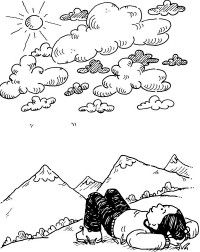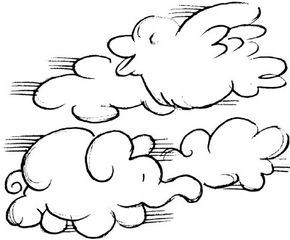All clouds are made of tiny droplets of water. Yet clouds come in all shapes and sizes, and bring different kinds of weather, which makes identifying clouds all the more interesting.
What You'll Need:
The main kinds of clouds are listed below. They're listed from the lowest to the highest in the sky.
What type of clouds are in the sky right now?
Keep a record of the clouds you see each day. You can draw the clouds and keep a count of how many days you see each type of cloud.
Maybe you'll be able to see them all!
Low clouds (up to 6,500 feet)
- Fog: Clouds in contact with the ground.
- Stratus: Low sheets of clouds that form less than a mile above the earth. Like a thick blanket over the Earth, they bring dark, gray days -- and, sometimes, drizzle.
- Nimbostratus: A very thick, dark layer of clouds that bring rain. (Nimbus is Latin for rain.)
- Cumulus: These are the big, white fluffy clouds that float by on sunny days. They usually mean good weather.
- Stratocumulus: Cumulus clouds pressed together in layers.
- Cumulonimbus: These clouds pile up into towering mountains called "thunderheads." They may bring thunderstorms. At their worst, they create tornadoes.
Middle clouds (6,500 to 20,000 feet)
- Altocumulus: These are rows of clouds shaped like long rolls.
- Altostratus: Thin, gray, layered clouds that look like a veil in front of the sun.
High clouds (20,000 to 40,000 feet)
- Cirrus: These long, wispy clouds are often called "mare's tails." Can you guess why?
- Cirrocumulus: These rows of long, thin clouds are sometimes called 'mackerel sky' because they resemble fish scales or ripples in water.
- Cirrostratus: These form thin layers of high clouds that often cause a halo around the sun or moon.
Gazing at the clouds will reveal more than just the weather. Learn how your child can spot a cloudy caper on the next page.
For more fun crafts and activities, check out:

